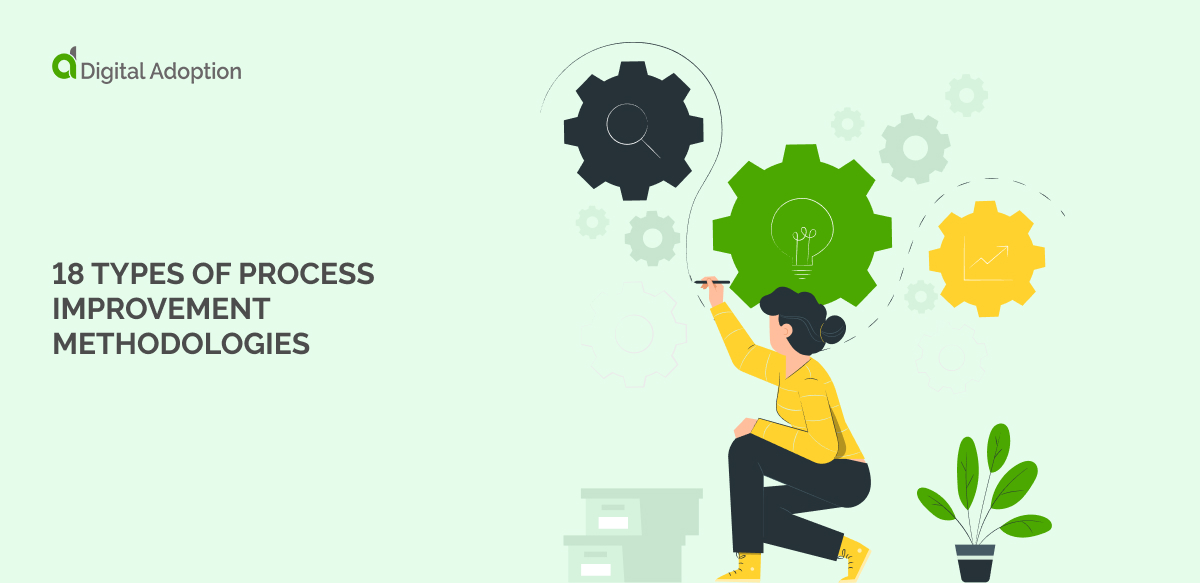Business professionals who want to learn how to measure product adoption will find everything they need in this 2-for-1 guide – B2B as well as B2C metrics.
In it, we’ll cover:
- What product adoption is and why it matters
- How to measure product adoption for customers
- How to measure product adoption for employees
This guide is a must-read for any business professional implementing new products or software … either in-house or for their customers.
Product Adoption: What It Is and Why It Matters
Product adoption refers to the implementation and adoption of a new product by the end users.
This process includes:
- Trial, testing, and deployment
- Onboarding
- Product training
As well as other processes that help customers learn and utilize new products.
Those customers may be consumers in the B2C arena or employees in a business – that is, B2B customers.
In either case, product adoption is an important part of digital adoption.
Effective adoption can make a big difference in key areas, such as:
- User satisfaction, retention, and longevity
- User proficiency and productivity
- Users’ lifetime value
To name just a few metrics.
Below, we will look at how to measure product adoption for two types of customers: employees and consumers.
How to Measure Product Adoption for Employees
When a business adopts a new digital product, such as a SaaS platform, employee performance is a maor concern.
This also makes product adoption a big issue, because it affects employee performance and ultimately the overall returns on a software investment.
Measuring product adoption for employees, therefore, tends to revolve around areas such as:
Employee Learning
Employee learning refers to how effectively and efficiently employees learn to use a platform or product.
Specific metrics can include:
- Time-to-competency
- Accomplishment of specific outcomes, such as courses
- Error rates
Data such as this can help product adoption specialists improve learning rates, which in turn boosts productivity levels.
Employee Productivity
Another area to focus on is employee productivity.
During any product adoption process, productivity will lag as employees learn to use that new tool.
In most cases, new products will enable greater productivity in the long run. But unless that productivity is tracked, employers will be operating in the dark.
There are different ways to measure employee productivity, which often differ based on the product in question.
Example metrics include:
- Employee output levels
- Employees’ ability to accomplish specific objectives or tasks
- Productivity metrics specific to a business function, such as the time it takes to follow up with leads
These measures can then be linked back to the product adoption process.
Specialists and managers can then make improvements as needed.
Employee Engagement
Engagement is another software metric that is important for both B2C and B2B customers.
It refers to how actively people use a tool or platform. But it can also be a reflection of other important factors, such as satisfaction or training efficiency.
To measure engagement, employers can track specific metrics such as:
- How often employees use a product
- Which features are used
- Employee satisfaction scores
As with the other factors covered here, engagement should be placed into the context of a specific product adoption strategy.
Software Utilization
If employees only use half of a platform’s features, then the organization will be missing out on a huge chunk of potential value.
Therefore, software utilization is another important area to measure.
Metrics can include:
- How extensively certain features are used
- How often employees complete certain tasks or workflows
- How quickly and efficiently users become productive
Software utilization, in conjunction with the other areas covered above, can help employers understand their product adoption process and make improvements as needed.
How to Measure Product Adoption for Customers
Customers in the B2C world, such as mobile app users, may also be analyzed using similar metrics.
After all, the core stages of product adoption, such as onboarding and training, remain the same.
However, B2C apps and enterprise-grade business software often have different aims, not to mention different levels of complexity.
A CRM platform, for instance, is a sophisticated enterprise tool with a steeper learning curve than a mobile game.
For reasons such as this, product adoption specialists in the B2C world tend to emphasize different areas, such as:
User Acquisition
User acquisition is important area of concern for app developers.
Acquisition metrics often focus on:
- Costs, such as the cost of user acquisition
- Volume, such as the number of new users acquired during a certain time period
- Time, such as how long it takes to the organization to acquire new users
Successful customer acquisition depends upon other factors, such as user engagement, another area to focus on in B2C product adoption.
User Engagement
User engagement is as important in the B2C environment as it is in the B2B world … if not more so.
After all, customer engagement can affect and reflect:
- User churn and user retention
- User satisfaction
- User loyalty and longevity
Engagement is an important piece of the digital adoption model – one that plays a large role in the next area that businesses measure:
Users’ Lifetime Values
Every user is a customer, which means that every user delivers value.
The lifetime value of a user (LTV), in turn, is linked to the bottom-line profitability of a tool and the business.
In simple terms, this value is a measurement of the average amount of money that a customer will bring in during his or her experience with a company.
This metric can also be broken down further, through audience segmentation or by measuring time-to-ROI, for instance.
Final Thoughts
Digital product adoption is an important process for a business to measure.
As we have seen, the product adoption process can deeply affect key customer metrics, from engagement to profitability.
The better a business can measure its adoption program, the better it can understand its customers and how to meet their needs.















